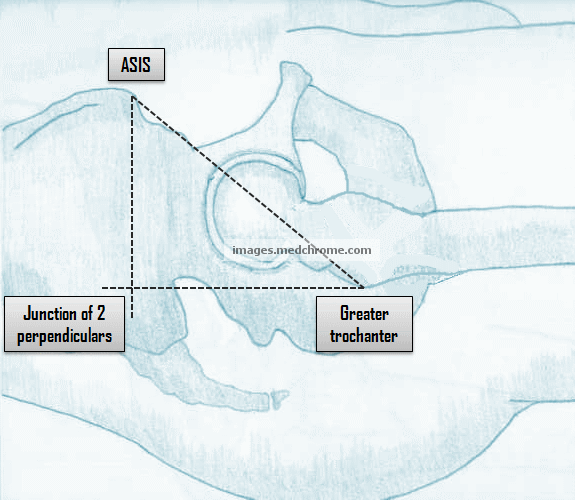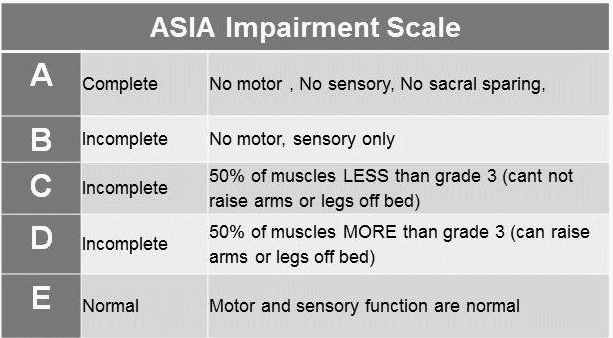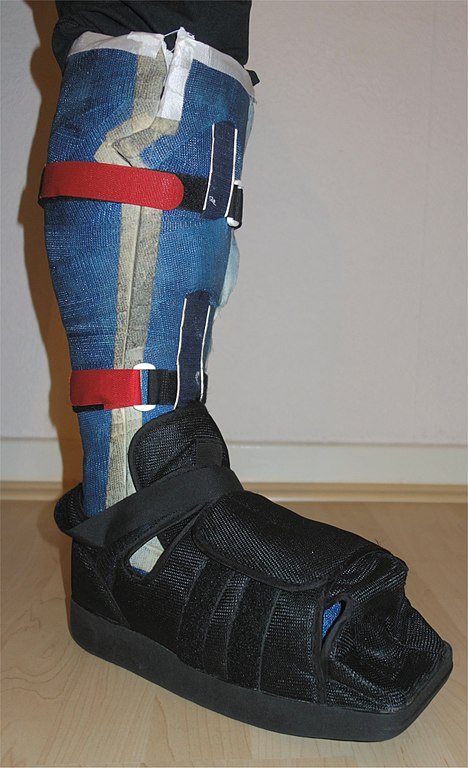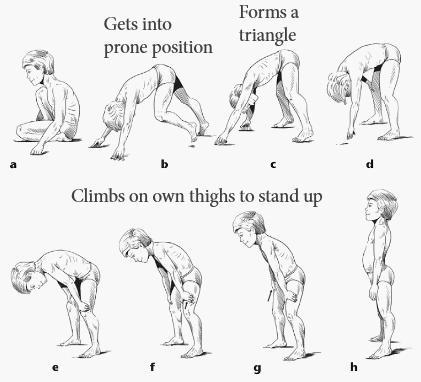Synonyms: Iliofemoral triangle
Position: The patient lies supine with the pelvis square, and the limbs in identical position.
Points of the Bryant’s triangle:
The Bryant’s triangle is a right angled formed by:
- Anterior Superior Iliac Spine (ASIS)
- Tip of Greater trochanter
- Junction of perpendiculars from the 2 points above (1st draw a perpendicular from ASIS to bed and another perpendicular from greater trochanter to meet the 1st perpendicular)
Use: Quantitative measurement of supra-trochanteric shortening of hip

Examination:
The triangle should be marked on both the sides and each side of the triangle is compared with its counterpart on the normal side. The distance between the tip of greater trochanter and the junction of 2 perpendiculars i.e. base of the triangle measures supra-trochanteric shortening. This may occur due to shortening in neck or head of femur, hip joint or dislocation of joint:
- Dislocation of hip
- Central fracture – dislocation of hip
- Destruction of head or acetabulum or both
- Fracture of the neck of femur
- Coxa-vara deformity of the hip
- Malunited intra-trochanteric fracture
Bryant’s triangle is on no value in:
Mnemonic: ABC
- ASIS absent
- Bilateral disease
- Chopped hip (hip disarticulated)
Reversed Bryant’s triangle:
When the proximal migration of the tip of greater trochanter is beyond the ASIS, then reversed Bryant’s triangle is drawn. Total supratrochanteric shortening will be the summation of base of triangle on normal side and the base of triangle in abnormal side.


